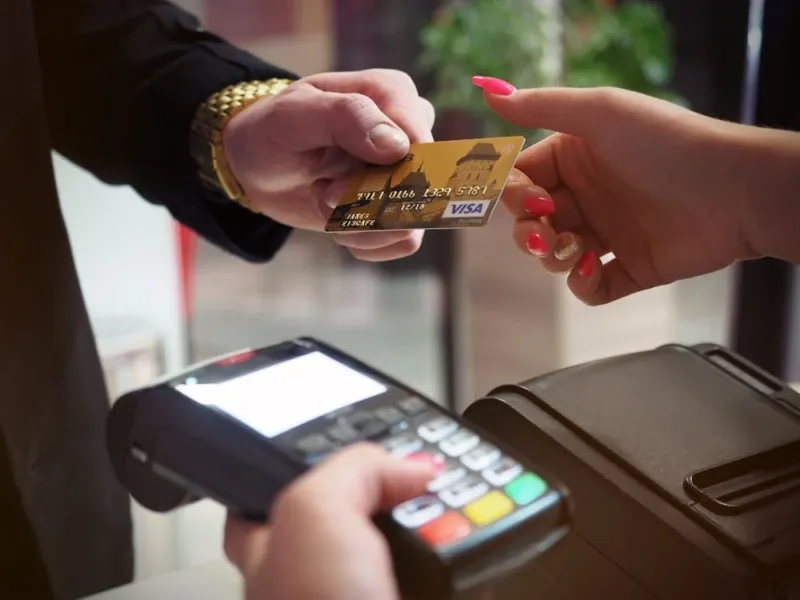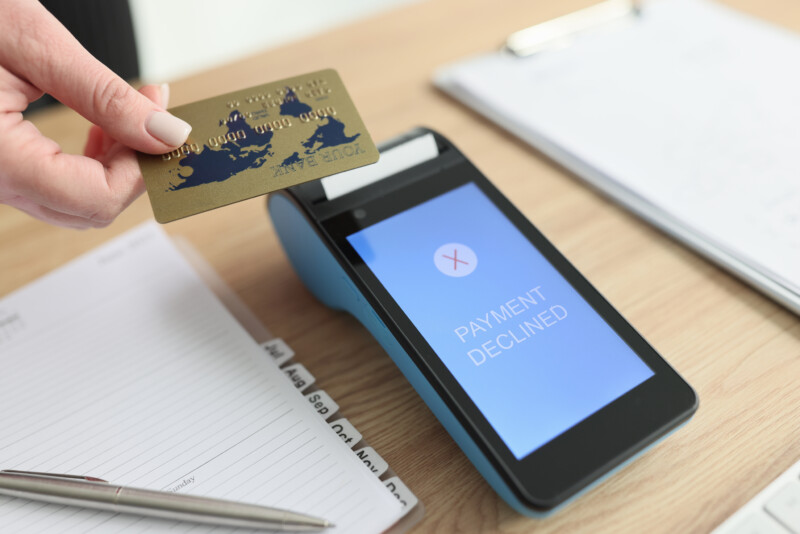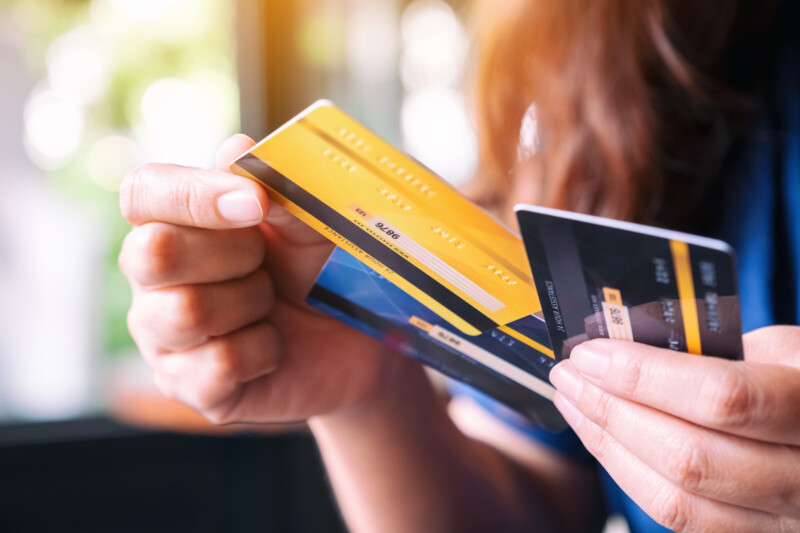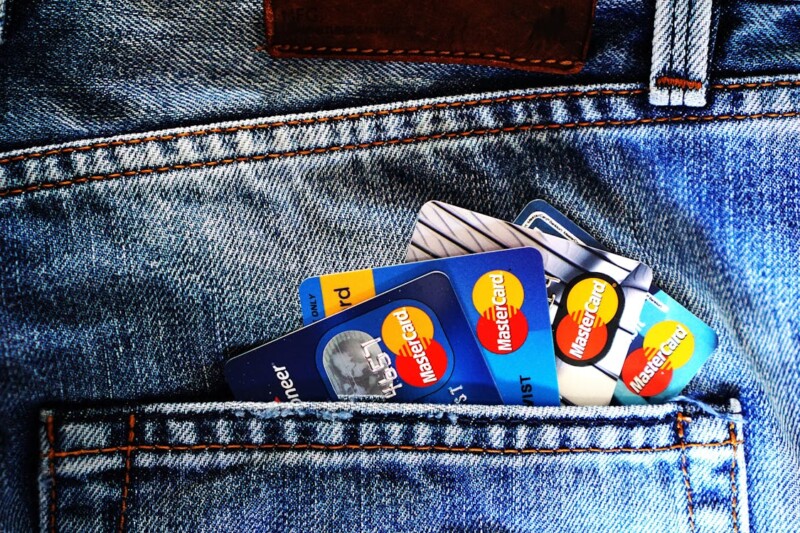There’s nothing more frustrating than trying to make a purchase and seeing your debit card declined. This hiccup can throw a real wrench in your day, whether at the grocery store, filling your gas tank, or paying for a meal. If your debit card is declined, it’s usually due to insufficient funds, wrong PIN entry, or your bank’s security measures.
Sometimes, your bank might be stepping in to protect you from fraud. They could block your card if they notice any unusual activity. It’s a good idea to let your bank know if you plan to make a big purchase or use your card in a different location. Another common reason is simply forgetting that your card has expired – check the date on it and make sure it’s still valid.
For those looking to avoid this hassle, keeping track of your account balance and being aware of any daily spending limits can prevent embarrassing moments. If things still go south, a quick call to your bank can clear things up and get you back on track.
Key Takeaways
- Insufficient funds or a wrong PIN can lead to card declination.
- Inform your bank about big purchases to avoid security blocks.
- Regularly check your card’s expiration date.
Debit Card Basics

Debit cards make it easy to access your money. You’ll learn about the types of debit cards, how they work, and how they compare to credit cards.
Types of Debit Cards
Debit cards come in different forms. Standard debit cards linked to your checking or savings account. You can use them to make purchases or withdraw cash. Prepaid debit cards require you to load money onto them before use. They aren’t linked to a bank account but work similarly to standard debit cards. ATM cards only allow withdrawals and balance checks at ATMs. EMV debit cards have a chip for added security. Knowing the differences helps you choose the right one for your needs.
How Debit Cards Work
Debit cards pull money directly from your checking account when you purchase. You swipe or insert the card at the point of sale, enter your PIN, and complete the transaction. This system ensures you spend only what you have. Some cards offer contactless payments, letting you tap the card on a reader. Online payments require entering card details. If your balance is too low, the transaction gets declined. Always keep an eye on your balance to avoid issues.
Debit Cards vs. Credit Cards
Debit cards and credit cards might look similar, but they work differently. With a debit card, you’re spending money from your bank account. Credit cards let you borrow money up to a certain limit. You then repay the amount later. Debit card transactions don’t affect your credit score, whereas responsible credit card use can improve it. Debit cards don’t charge interest, but credit cards do if you carry a balance. There are also different protections; many debit cards offer less fraud protection than credit cards. Understanding these differences helps you use each card wisely.
See Related: Credit Card Churning: Earning Rewards and Bonuses Effectively
Common Reasons for Debit Card Declination

Sometimes, your debit card might be declined, which can be confusing and frustrating. Here are some key reasons for this and what you can do about it.
Insufficient Funds
The most common reason is insufficient funds. This means you don’t have enough money to cover the purchase. For instance, the transaction will be denied if you try to buy groceries worth $50 but you have only $30 in your account. Always check your balance before making purchases to avoid this issue. Some banks offer alerts to notify you when your balance is low.
Expired Card
Your debit card has an expiration date printed on it. If you try to use the card after this date, it will be declined. This is because your bank has issued a new card, assuming you will start using it. Ensure you activate any new card you receive and update your information for automatic payments.
Fraudulent Activity Suspected
Banks monitor accounts for suspicious activity to protect you from fraud. If they notice anything unusual, like a large purchase or a transaction in another country, they might block your card to prevent fraud. You can often clear this up by contacting your bank and confirming that you are making the purchase.
Incorrect PIN Entered
Entering the wrong PIN multiple times can cause your debit card to be declined for security reasons. If you forget or mistype your PIN several times, the bank may lock your card to prevent unauthorized access. To fix this, you might need to reset your PIN or contact your bank for assistance.
Technical Issues with the Card
Sometimes, technical issues like a worn magnetic strip or a damaged chip can prevent your card from being read. If your card is physically damaged, it can trigger a declination. In such cases, request a replacement card from your bank. Many banks offer this service quickly to minimize inconvenience.
ATM Issues
Problems with the ATM itself can also lead to a declined transaction. The machine might be out of service or unable to connect to the bank’s server. If this happens, try another ATM or wait a few minutes and try again. If the problem persists, contact your bank.
International Transaction Flags
Using your debit card for an international purchase can trigger a decline if your bank isn’t aware of your travel plans. Many banks flag international transactions as suspicious to prevent fraud. Notify your bank before traveling to avoid such issues. Some banks allow you to set travel notifications online or through their app.
Daily Limits on Transactions
Most banks set a daily spending limit on debit card transactions to protect you from losing large sums in case of theft or fraud. If you hit this limit, your card will be declined even with sufficient funds. You can often request a temporary increase in your limit by contacting your bank.
See Related: Bank Churning: How to Earn Bonuses Through Strategic Bank Account Management
Preventative Measures and Solutions

Preventing your debit card from being declined can save you time and frustration. You can avoid the most common issues by managing your account actively and using available tools.
Keeping Your Account Funded
Your debit card transactions rely on having enough funds in your account. Always ensure you have sufficient money in your checking account to cover purchases. Using online banking or a mobile app can help you monitor your balance. If you share your account with a joint holder, communicate regularly about spending to avoid accidental overdrafts. Consider setting up an overdraft protection plan with your bank to buffer against insufficient funds, which can help avoid overdraft fees.
Regularly Updating Personal Details
Banks need accurate personal information to operate smoothly. Ensure your contact details, such as your phone number and address, are always current. If personal information changes, notify your bank immediately. This prevents your bank from flagging transactions as suspicious due to outdated information. Plus, keep an eye on your card’s expiration date and request a new card before the current one expires to avoid interruptions in service.
Monitoring Account for Unauthorized Activities
Keep a close watch on your bank account for any unusual, unauthorized, or suspicious activity. Regularly review your account statements through mobile banking or online banking.
Report any discrepancies to customer service right away. You can set up account alerts to receive notifications of any activity, which helps you catch and address issues quickly. Protect your account details and PIN to prevent unauthorized access.
Understanding Your Card’s Terms and Conditions
Read and understand the terms and conditions of your debit card. This knowledge helps you avoid situations that might lead to your card being declined.
For instance, be aware of daily transaction limits and international transaction fees. Know your card’s activation process and adhere to it. Understanding these details ensures smoother transactions and avoids unexpected declines.
Travel Notifications
When traveling, inform your bank of your plans to avoid blocking your card due to unexpected transactions from new locations. Many banks have travel notification services through customer service or online banking systems. By setting a travel notice, you can use your debit card without interruptions. This is especially helpful for international travel, where banks might flag transactions as suspicious.
Setting Up Alerts and Protections
Activate balance alerts and other notifications through your bank’s mobile app or online banking system. These alerts inform you about low balances, large transactions, and other important account activities.
Setting alerts not only helps you manage your money but also allows you to respond quickly to any potential issues. Additionally, consider using other protections like your bank’s fraud monitoring services to safeguard your account.
Addressing Debit Card Issues

When your debit card gets declined, it can be frustrating. Whether it’s due to an incorrect PIN or a suspicious transaction, knowing how to address these common issues is crucial.
Contacting Customer Service for Help
If your card is declined, first contact customer service. Speak to a representative who can explain why the transaction was blocked. They might tell you if it’s due to security measures, insufficient funds, or another issue. Having your account details and recent transaction information ready for this call is helpful.
What to Do if Your Card Expires
If your card has expired, you’ll need a replacement. Banks usually send new cards before the old one runs out, but if you haven’t received it, call customer service. Make sure your address is up-to-date. Once your new card arrives, activate it according to the bank’s instructions to avoid further issues.
Resolving PIN and Password Issues
Entering the wrong PIN or password is a common reason for declines. Ensure you’ve got it right, but you can reset it through your bank’s website or app if you forget. If you attempt too many incorrect entries, your card might get locked, requiring you to visit a branch or contact customer service to unlock it.
Dealing with Fraud and Theft
If your account has suspicious transactions, your bank might decline your card to prevent fraud. Contact your bank immediately if you suspect fraud. They can block your card and issue a new one. Always monitor your account regularly to catch any suspicious activities early.
Damaged or Demagnetized Cards
A damaged or demagnetized card won’t work properly at ATMs or POS terminals. You’ll need a replacement if you’ve scratched the magnetic strip or it’s worn out. Call customer service to request a new card. Consider using a protective sleeve to prevent future damage.
Updating Account Information for Joint Holders
For joint account holders, keeping information updated is essential. If you or your joint holder changes address or contact details, update them with your bank. Miscommunication can lead to declined transactions. Ensure both account holders know the account’s PIN and rules for its usage. Contact customer service if there are any access issues.
See Related: Ways to Get Free Money Directly to Your Bank Account
Advanced Topics in Debit Card Management

Advanced topics in debit card management cover using mobile and online banking resources, understanding your spending, and protecting yourself with overdraft options and fees.
Leveraging Mobile and Online Banking
Online and mobile banking apps have changed how you handle your debit card. With mobile apps, you can check balances, see transactions, and even set spending limits. These tools help you keep track of your money in real-time.
Online banking lets you transfer money easily between checking and savings accounts. This is super helpful when you need to avoid a declined transaction. You might also get alerts for suspicious activity, which can protect your account.
Using these tools smartly can prevent many issues before they happen.
Analyzing Spending Patterns and Budgeting
Keeping an eye on your spending is key. Analyzing your transactions can show you where your money goes. Use online banking to review your purchases. This helps you make better financial decisions.
Budgeting apps can connect to your mobile banking app, giving you a clear picture of your finances. Set spending limits for things like dining out or shopping. Knowing where your money goes lets you adjust and save more effectively.
Exploring Overdraft Protection and Fees
Overdraft protection can be a lifesaver. This service links your checking account to another account, like savings, to cover transactions if you run out of money. While this prevents declined transactions, it usually comes with an overdraft fee.
Understand how your bank handles overdrafts. Some banks might offer fee waivers or lower fees under certain conditions. Knowing these details can save you money and headaches.
Check your bank’s overdraft policy to ensure it’s right for you. Balancing protection with fees can help you manage your account better.